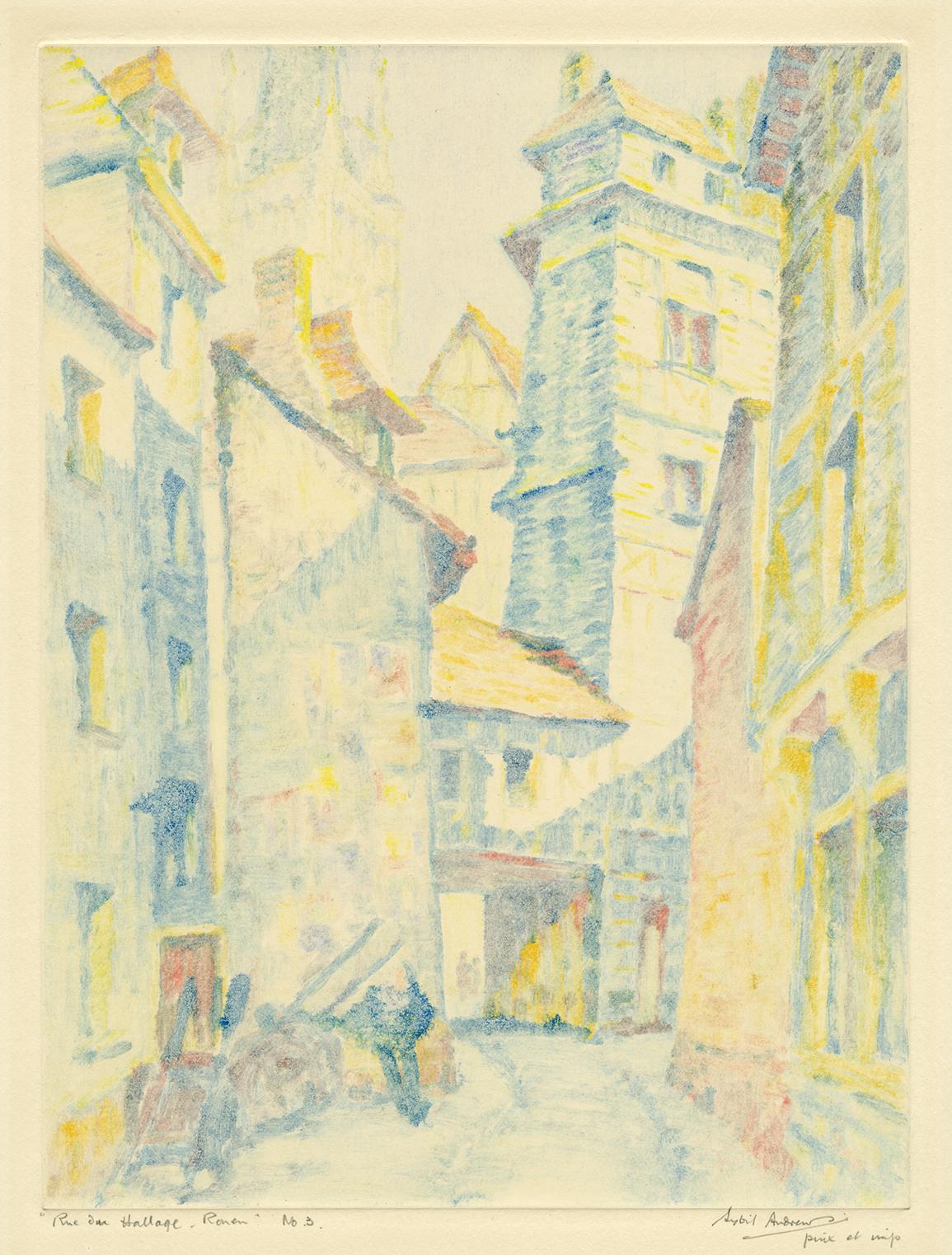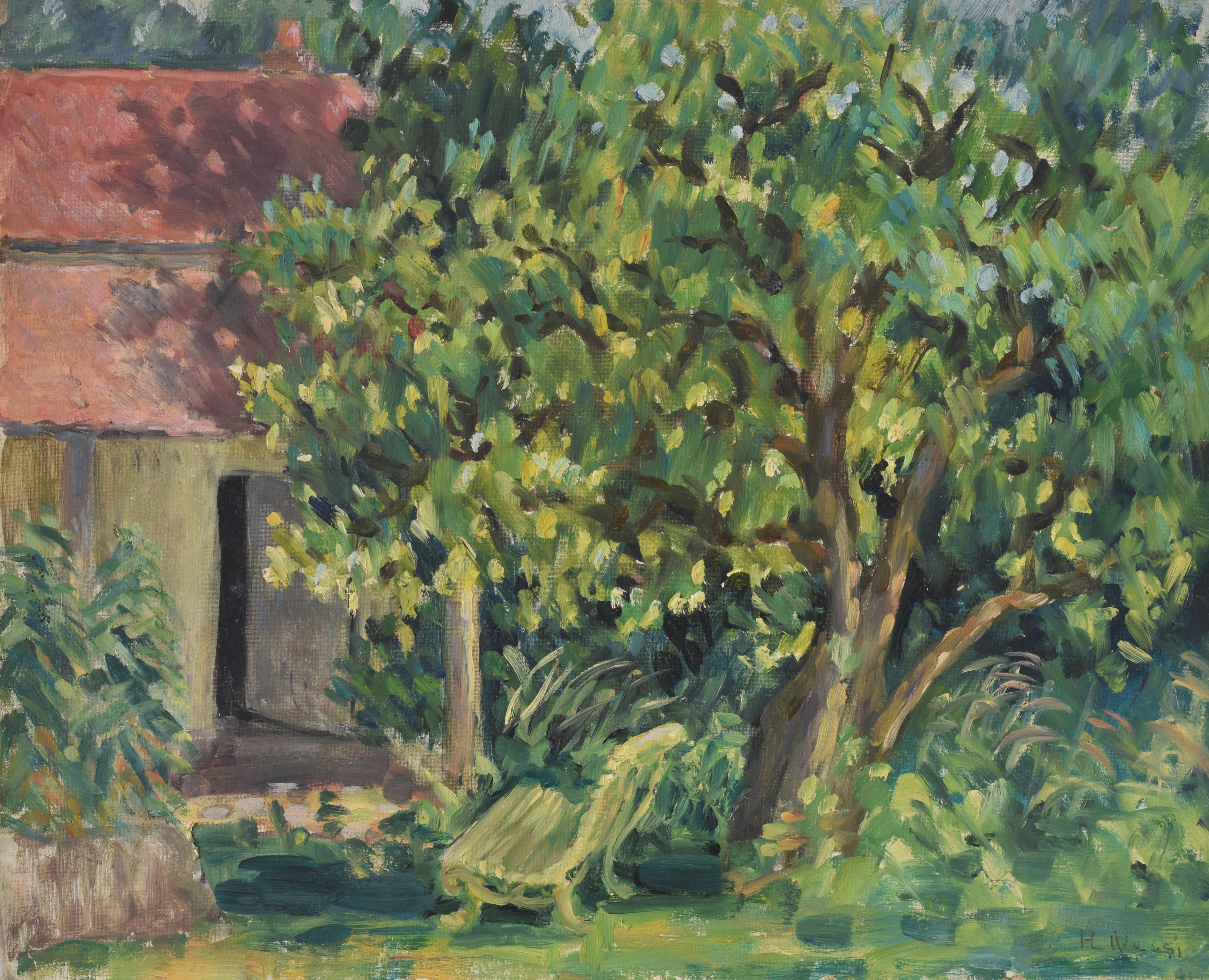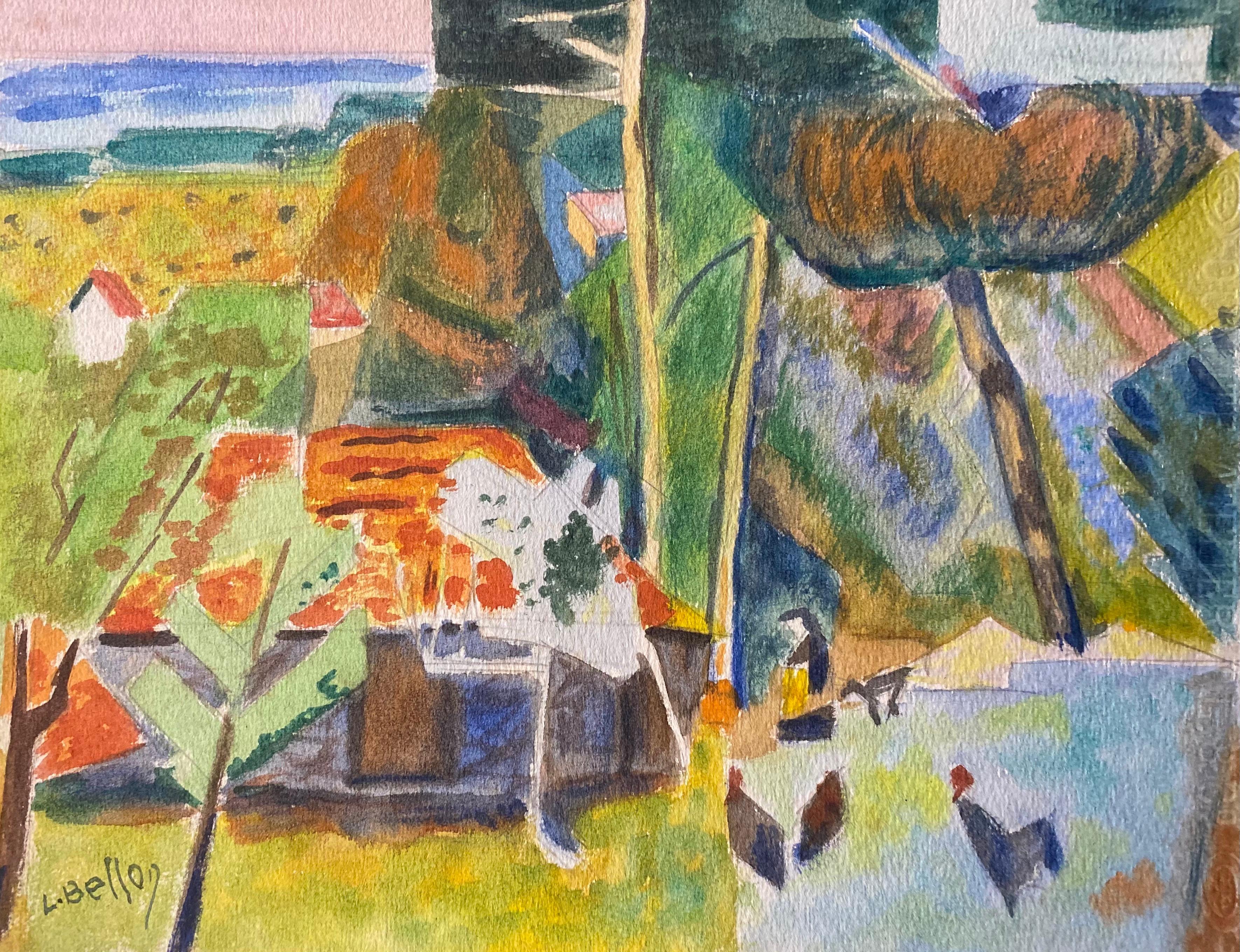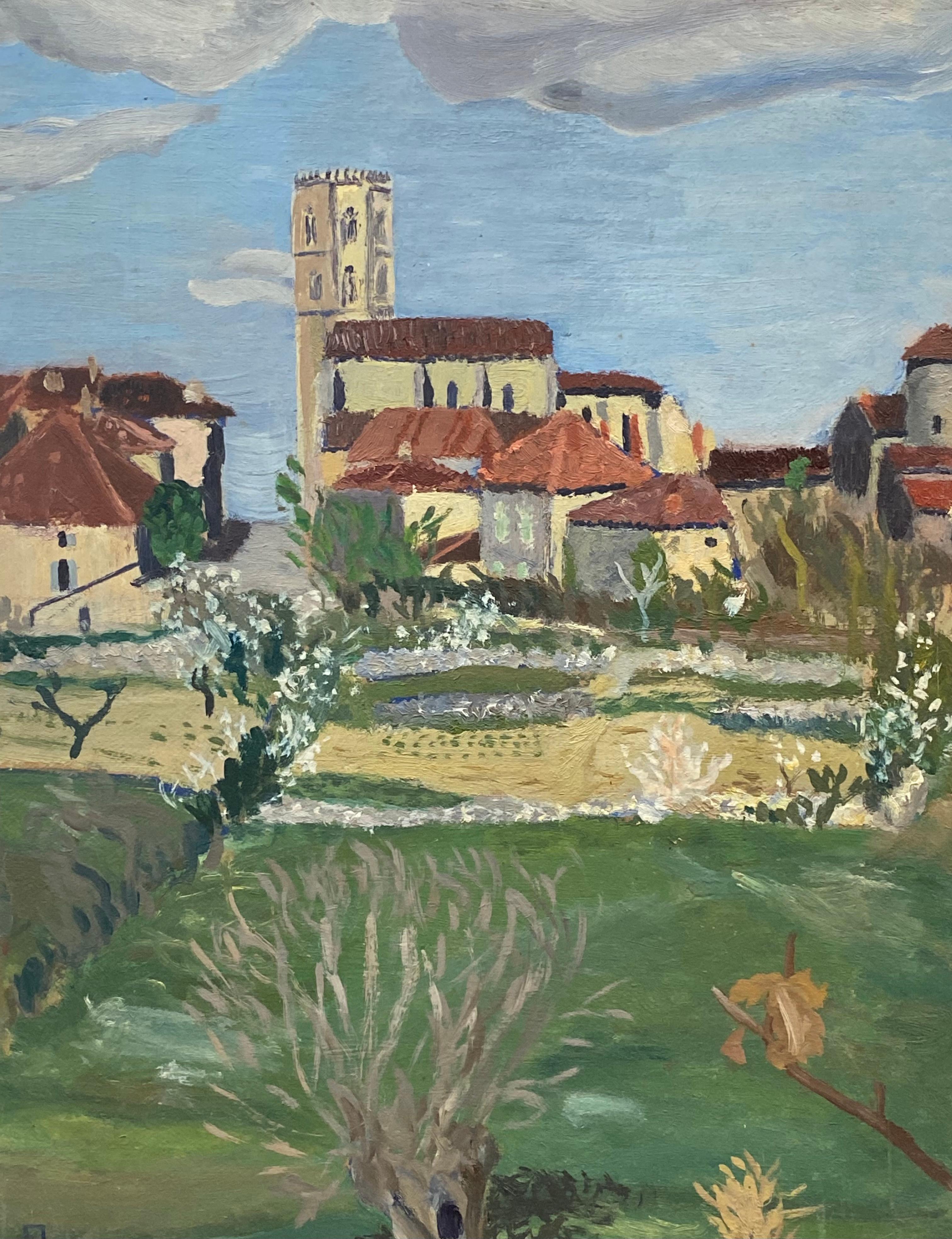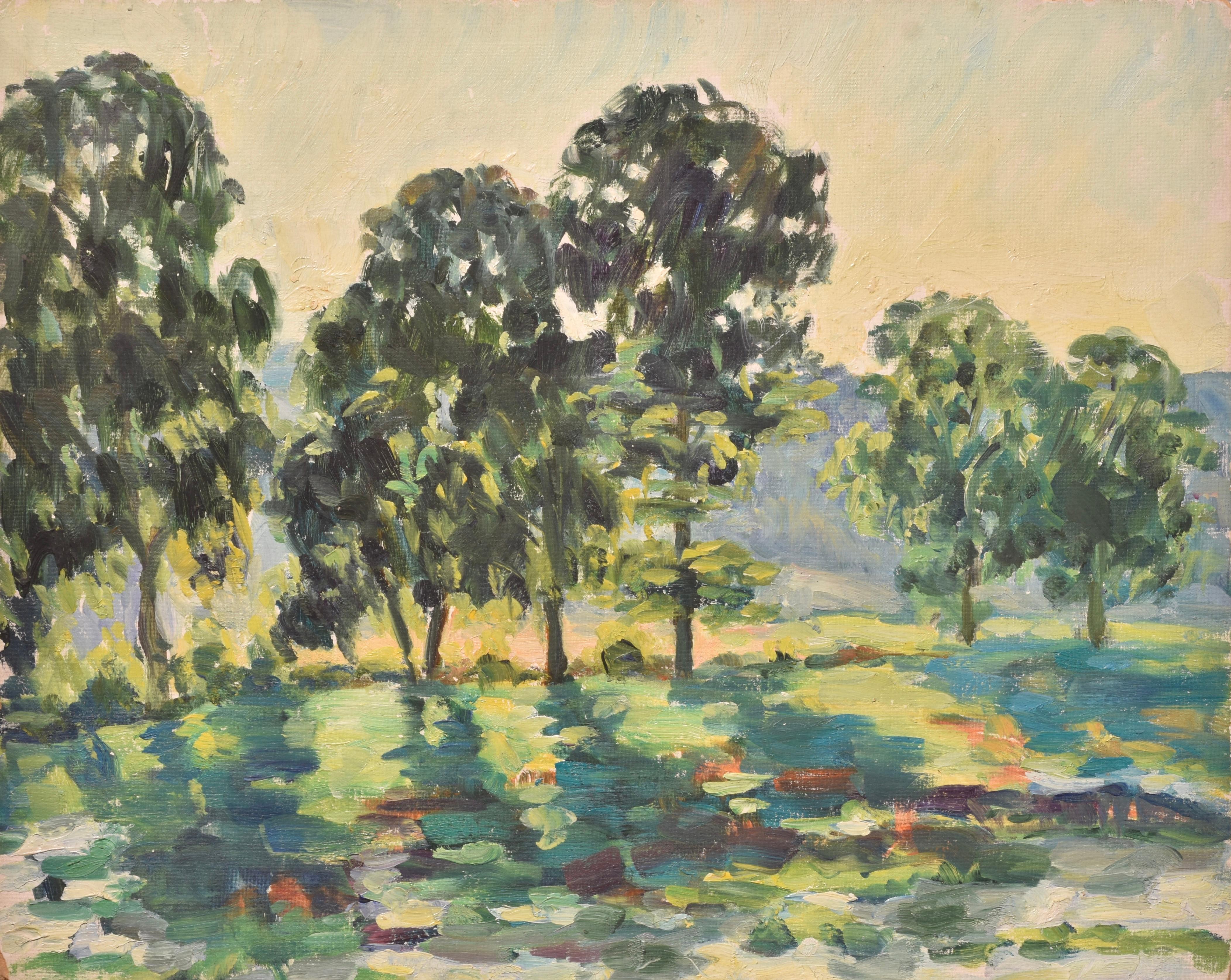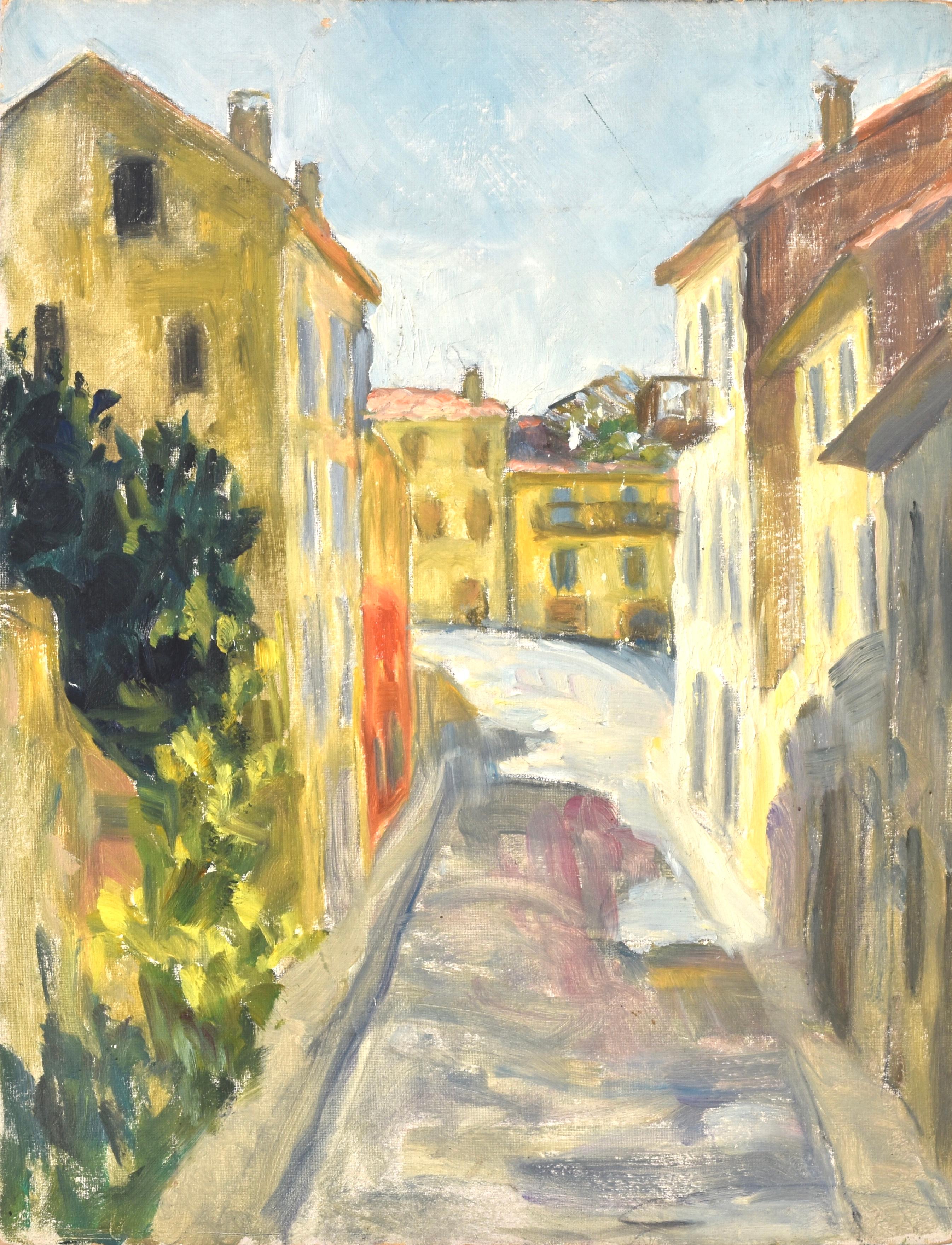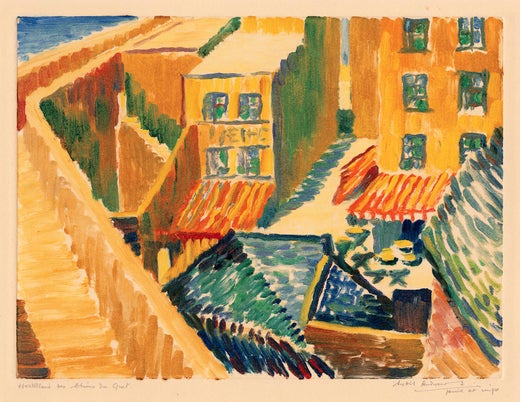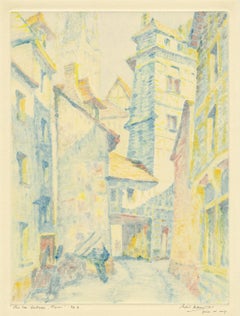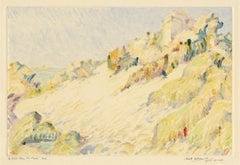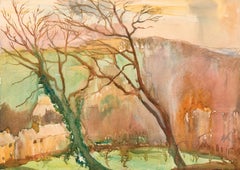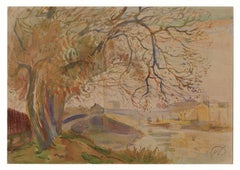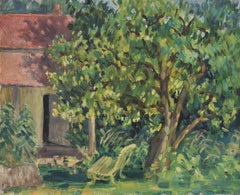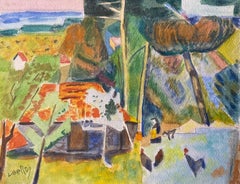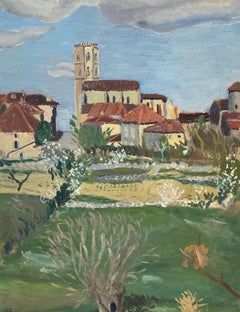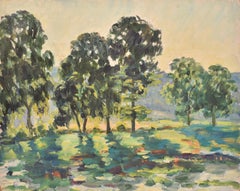Sybil Andrews'Hostellerie des Chiens du Guet' — British Impressionismc. 1925
c. 1925
About the Item
- Creator:Sybil Andrews (1898 - 1992, British)
- Creation Year:c. 1925
- Dimensions:Height: 8.94 in (22.71 cm)Width: 11.94 in (30.33 cm)
- Medium:
- Movement & Style:
- Period:
- Condition:
- Gallery Location:Myrtle Beach, SC
- Reference Number:Seller: 1042171stDibs: LU532312456562
Sybil Andrews
Sybil Andrews was an English-Canadian artist who specialized in printmaking and is best known for her reductionist linocuts. Born in 1898 in Bury St Edmunds, Andrews was unable to go straight to art school after her high school, as her family could not afford the tuition fees. Given the shortage of young men during the First World War, in 1916 she was apprenticed as a welder, working in the Bristol Welding Company’s airplane factory, helping in the development of the first all-metal airplane. During this period, she took an art correspondence course. After the war, Andrews returned to Bury St Edmunds, where she was employed as an art teacher at Portland House School. Between 1922–24, she attended the Heatherley School of Fine Art in London. Andrews continued to practice the art and met the architect Cyril Power, who became a mentor figure, and then her working partner until 1938. Between 1930–38, Andrews and Power shared a studio in Hammersmith. In 1933, Andrews and Cyril Power had an exhibition of their color monotypes and linocuts at the Redfern Gallery. Most of her monotypes were destroyed by a fire in an Ottawa gallery, in 1959 and they are therefore now seldom seen.
- ShippingRetrieving quote...Shipping from: Myrtle Beach, SC
- Return Policy
More From This Seller
View All1920s Post-Impressionist Figurative Prints
Monotype
1920s Post-Impressionist Landscape Prints
Monotype
1930s Post-Impressionist Landscape Drawings and Watercolors
Watercolor
Early 1900s Impressionist Landscape Drawings and Watercolors
Watercolor
Early 1900s Impressionist Landscape Drawings and Watercolors
Watercolor
Mid-20th Century American Modern Landscape Prints
Screen
You May Also Like
1950s Post-Impressionist Figurative Paintings
Oil
19th Century Post-Impressionist Landscape Paintings
Watercolor
Mid-20th Century Impressionist Landscape Paintings
Oil
1960s Post-Impressionist Figurative Paintings
Oil
1950s Post-Impressionist Figurative Paintings
Canvas, Oil
Mid-20th Century Post-Impressionist Landscape Paintings
Oil
